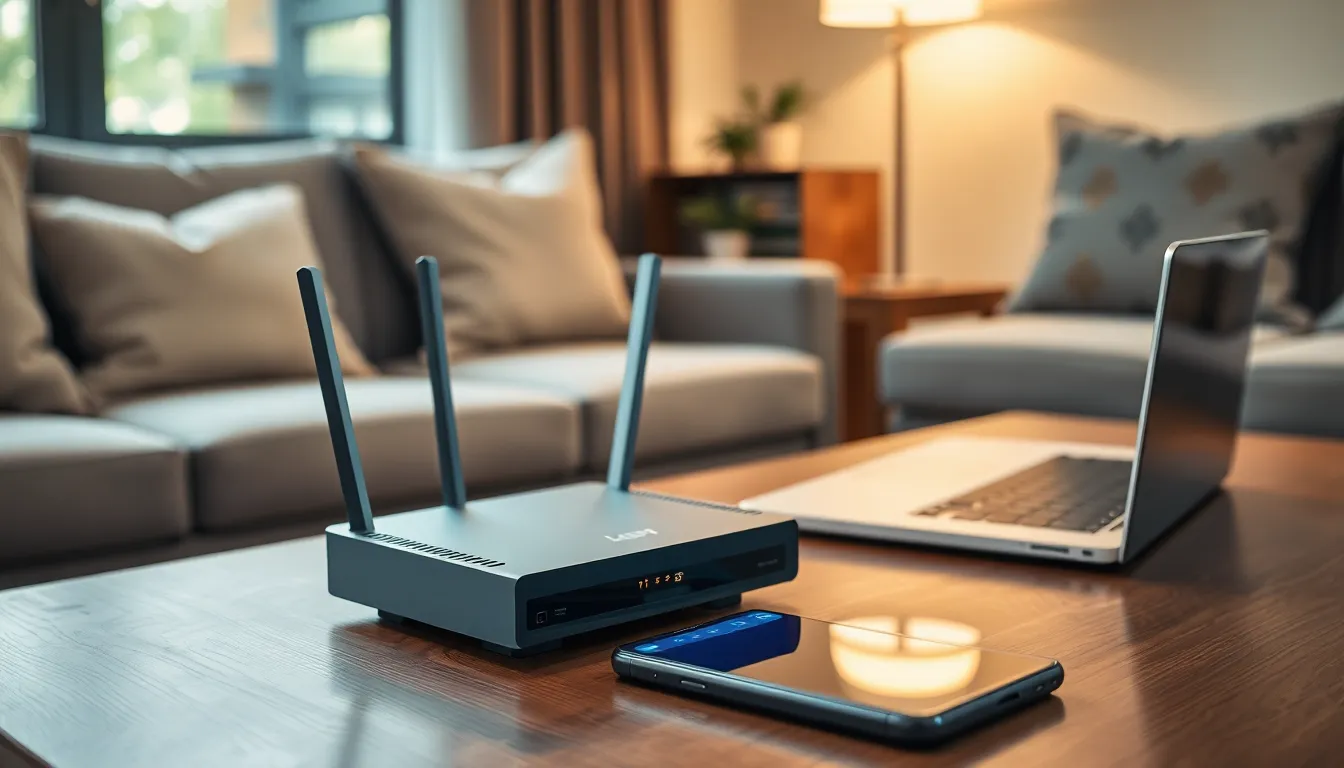In the vast world of networking, some numbers stand out like a neon sign in a dark alley. Enter 192.168.31.228.8080, a seemingly ordinary IP address that’s anything but. This little gem is your gateway to a universe of router settings and configurations, where the magic of connectivity happens. If you’ve ever found yourself scratching your head over your home network, you’re not alone.
Table of Contents
ToggleOverview of 192.168.31.228.8080
The IP address 192.168.31.228.8080 acts as a local endpoint for devices within a private network. This address often serves as a gateway to access router settings and control panel configurations. Users typically find it relevant when managing home networks, especially those who rely on specific router models for internet connectivity.
Accessing the IP address 192.168.31.228.8080 frequently allows individuals to alter essential settings, such as Wi-Fi passwords and network security protocols. Many users may input this address in web browsers to reach their router’s interface. It often leads to administrative tools crucial for troubleshooting connectivity issues or enhancing overall network performance.
Navigating to 192.168.31.228.8080 may present a login prompt requiring credentials for access. Users must input valid usernames and passwords to proceed with configuration changes. Default credentials can usually be found in the router’s manual or via the manufacturer’s website.
Understanding the significance of 192.168.31.228.8080 streamlines the process of network management. It plays a pivotal role in ensuring the smooth operation of connected devices, from smartphones to smart home appliances. Enhanced user knowledge of this IP address can improve home network setups, making it easier for everyone to maintain control over their internet settings.
Functionality and Purpose
The IP address 192.168.31.228.8080 functions primarily as an access point for router settings and configurations. Users leverage this address to manage their home networks effectively.
Common Uses of 192.168.31.228.8080
Common applications include changing network settings, updating firmware, and troubleshooting connectivity issues. Many users adjust Wi-Fi passwords and enable or disable security features through this IP address. Technicians often recommend accessing the router interface using this address for seamless device connections. Devices within a home network connect directly, allowing for easy alterations to permissions and configurations.
Benefits of Using This IP Address
Utilizing 192.168.31.228.8080 enhances the user experience by streamlining network management. Efficiently managing network settings prevents unauthorized access and bolsters security. Users gain the ability to customize network options frequently, ensuring optimal performance for connected devices.
Accessing this address offers convenience, particularly for troubleshooting routine issues. Effective router management becomes simpler, leading to improved reliability and stability across devices. Users and technicians appreciate the straightforward interface provided by this IP address, making network adjustments effortless.
How to Access 192.168.31.228.8080
To access 192.168.31.228.8080, a user typically opens a web browser and enters the IP address in the address bar. Pressing Enter directs the browser to the router’s login page. Connections should occur on devices connected to the same network. Users might find login credentials on the router’s manual or the manufacturer’s website.
Step-by-Step Access Instructions
- Open a web browser on a connected device.
- Type 192.168.31.228.8080 in the address bar.
- Press Enter to navigate to the login page.
- Input the username and password, often set to defaults like “admin” and “password.”
- Click “Login” to access the router settings.
Completing these steps provides access to modify network configurations effectively. Users can view settings or troubleshoot issues related to connectivity.
Troubleshooting Access Issues
In some cases, users might encounter issues when trying to access 192.168.31.228.8080. First, ensure the device connects to the correct network. If unsuccessful, verify if the IP address is typed accurately and doesn’t contain extra periods. Users can try clearing the browser cache or using a different web browser.
Changing the connection method may also help. Switching from Wi-Fi to a wired Ethernet connection can resolve intermittent access problems. If issues persist, rebooting both the router and connected devices could restore access to the login page.
Security Considerations
Understanding security considerations surrounding 192.168.31.228.8080 is crucial for effective network management. Failing to address potential vulnerabilities can expose personal and sensitive data to threats.
Potential Vulnerabilities
Common vulnerabilities associated with 192.168.31.228.8080 include outdated firmware, weak passwords, and lack of encryption. Users often neglect updating router software, leaving their devices exposed to known security flaws. Insufficient password complexity allows unauthorized access, while unencrypted Wi-Fi connections further jeopardize data privacy. Additionally, network configurations that permit remote access can create security risks. Regular assessments of these vulnerabilities help maintain network security.
Best Practices for Secure Access
Practicing secure access to 192.168.31.228.8080 entails implementing several key measures. Changing default usernames and passwords strengthens security significantly. Enabling WPA3 encryption for Wi-Fi connections enhances data protection during transmission. Regularly updating router firmware ensures defenses against emerging threats. Users should also disable unnecessary remote management features to limit access points. Establishing a robust network security framework helps safeguard personal information and connected devices.
Conclusion
Understanding the significance of 192.168.31.228.8080 empowers users to take control of their home networks. By accessing this IP address, they can manage settings that enhance security and improve connectivity. Following best practices for security ensures that networks remain safe from potential threats.
Regularly updating firmware and changing default credentials are just a couple of ways to maintain a secure environment. With the right knowledge and tools, users can troubleshoot issues effectively and enjoy a seamless online experience. Embracing these practices leads to a more reliable and secure network for all connected devices.




